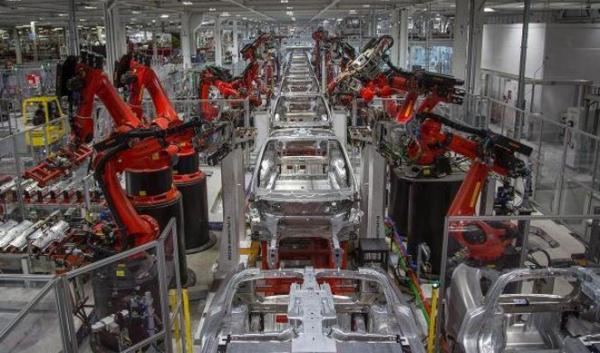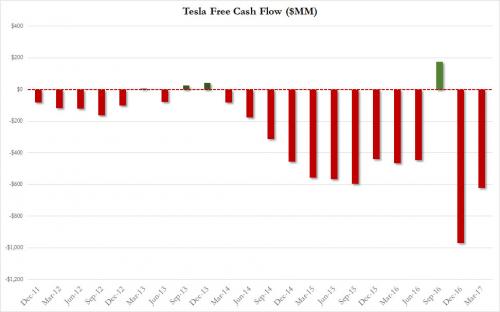Elon Musk bills Tesla (TSLA) as the pinnacle of “lean” manufacturing. Just search for pictures of Tesla’s manufacturing plant and you’ll undoubtedly be served up futuristic looking images, like the one below, depicting 100’s of red robots building vehicles without a single employee in sight.

But, if Tesla is truly the lean manufacturing powerhouse that it purports itself to be then we do wonder why it continues to burn through ~$600 million of cash every single quarter, or roughly $30,000 for every car that it sells?

Perhaps this ‘anomaly’ has something to do with the fact that, as Automotive News points out, Tesla’s real ‘capacity problem’ has nothing to do with the size of their manufacturing facility but rather the staggering number of people they’re using to build their cars.
The 5.3 million square feet of manufacturing space that Tesla now occupies started off as a joint operation between General Motors (GM) and Toyota (TM) which began in 1984 and was intended to help the Japanese automaker learn about doing business in America and teach GM the principles of lean manufacturing. 20 years ago the plant pumped out over 350,000 new cars each year or roughly 74 vehicles per worker.
Meanwhile, Tesla, the ‘pinnacle’ of lean manufacturing with a 20-year technology advantage, somehow only manages to build somewhere between 8-14 cars per employee.
It’s because in this temple of lean manufacturing, Tesla uses far more workers than NUMMI employed to build far fewer cars. In 1985, its first full year of production, NUMMI had 2,470 employees and produced 64,764 vehicles — about 26 vehicles per worker per year. By 1997, it had 4,844 ? workers and produced 357,809 vehicles — about 74 vehicles per worker per year.
Tesla, on the other hand, had between 6,000 and 10,000 workers in 2016 and manufactured 83,922 vehicles. That puts its vehicle-per-worker number between 8 and 14, about one-seventh the efficiency of NUMMI at its peak.
“The number of people Musk’s got in there has a great deal to do with why he doesn’t make money building vehicles,” said automotive manufacturing consultant Michael Tracy of Agile Group in Howell, Mich. “Toyota’s numbers reflect the number of people you expect to have if you were going to efficiently build vehicles for a profit.”













Leave A Comment